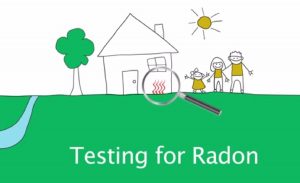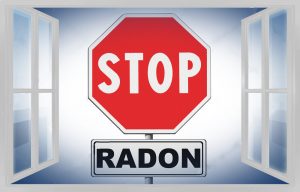Every year, radon gas is responsible for more than 20,000 deaths in the United States due to lung cancer. This is more than the next two leading causes of death in residential buildings combined: falls and home fires. Commercial building owners, managers, and other business owners can’t ignore radon testing and cleanup as well. And that’s where radon mitigation comes in.
Natural radioactive gas radon is widespread in other building constructions as well. This is because it is a naturally occurring radioactive gas. As in a residence, radon gas can also affect commercial buildings. It can seep in through cracks, walls, floors, and drainage systems.
How Can We Detect Whether Our Buildings Contain Radon Gas?
You can’t know for sure if your commercial property is safe from radon contamination than to have it tested by an experienced professional.
It is not unusual for a radon test to take up to 48 hours to complete. You need to test each room in your home for radon when you hire a licensed radon testing company. Retrieving the kits and sending them off for analysis will take place two days later.
You will have the results sent to you in a day or two. So, the expert will be able to give the owner a thorough breakdown of the radon concentration levels in the building.
It’s important to know that each area of the building may have different test results. The person overseeing the testing can provide an explanation of the results and determine whether or not you need to take further action.
Steps To Analyze The Radon Levels In Commercial Buildings
Fortunately, radon testing is simple and inexpensive. Do note though that commercial properties have different testing standards than private residences. It takes around 48 hours for a trained radon specialist to conduct tests on the location. Over twenty states have training programs and/or licensing requirements for radon testing and mitigation. So, it’s ideal to work with professionals who are aware of those requirements. In general, a commercial property’s scope includes the processes listed below:
- Close all windows and doors at least 12 hours before the test. Use the main entrance door only when the building is empty; otherwise, keep it closed.)
- To acquire accurate data, place radon test kits in each room or unit of the building and leave it untouched for 48 hours. To avoid tampering with the data, utilize only needed air purifiers and ventilation systems.
- Once the 48-hour period has passed, the specialist will collect the test kits and ship them off to a laboratory for processing. In certain cases, the processing takes 24 hours, while in others, it may take days.
- Afterward, a report will be prepared by an expert who will explain the findings and suggestions of the test.
What Is The Best Way To Get Rid Of Radon In A Commercial Building?
Want to know about your commercial building’s radon levels? A radon mitigation specialist can guide you through the removal procedure. You can install radon mitigation systems in different ways, depending on the structure of the building. There may also be multiple options. Then, the property owner’s preference will be taken into consideration by the professional.
Once you’ve made access to the property, it may take a few weeks for the installation to complete. Radon mitigation experts can do radon tests after installing the mitigation systems. This helps to verify that the levels have fallen below the EPA action limit and that the mitigation systems are functioning effectively.
When Do You Need to Look to Reduce Radon Levels In Commercial Properties?
This is the proclaimed action level for radon gas removal, as stated by the Environmental Protection Agency (EPA). You need to address radon concentrations over four parts per million right away.
Take additional care to provide a radon-free environment at facilities that serve youngsters, or the elderly. This includes:
- Daycare
- Schools
- Foster Homes
- Office Building
- Apartment Complexes
Own a house or spend a lot of time in a building? Check the radon levels to ensure they are below the EPA’s recommended level.
If you’re not the owner of the property, you can ask the building owner for any testing information they may have. And if you own the building, it is your responsibility to provide a secure environment for all of its occupants. You need a proper radon test by the property owner to avoid any surprises.
Radon Mitigation Done the Right Way
The owner of the commercial property has a moral and legal obligation to ensure the safety of the people living there, especially children. Radon poisoning can cause a variety of malignancies, respiratory problems, and even death in high doses.
Do not underestimate the value of radon testing to potential buyers if you have any doubts. Renters can rest easy knowing that the building in which they are taking office space is safe. A professional radon test isn’t expensive, and it’s worth every penny to safeguard the lives of others.
We can help you with radon mitigation. Contact our experts today to know more about how we can help!




